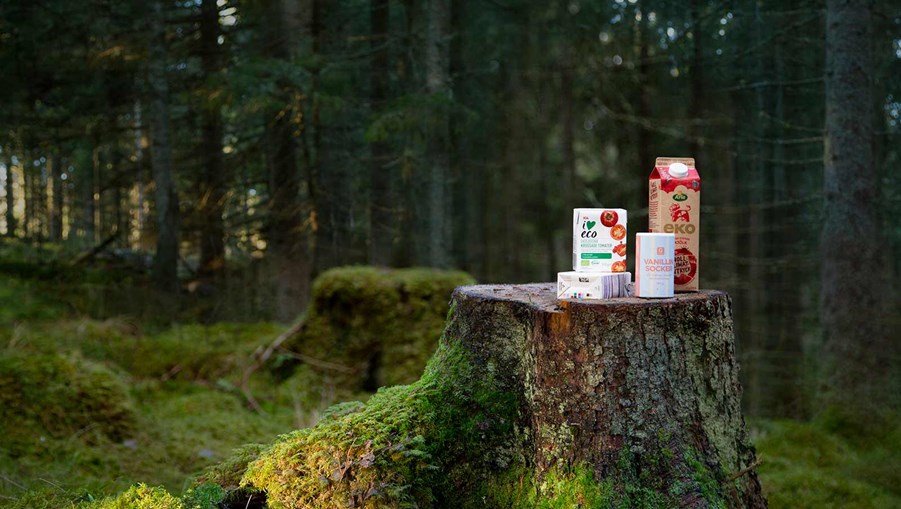
How do we design buildings that are so good, they never need to be demolished?
This is a question that Anna Denell, Sustainability Director at the property company Vasakronan, has given a great deal of thought. Traditionally, construction projects consume large amounts of resources. But now there is a growing interest in recycling.
Six years ago, Vasakronan conducted a detailed analysis during the construction of a new office block. By the time the building was completed, they established that of the 1018 kg used for every square metre of office space, 98 percent of the material came from non-renewable resources.
“The only reasonable justification for a project that consumes such huge resources is that it should be able to stand, and be used, forever,” says Anna Denell, Sustainability Director at the property company Vasakronan.
Since then, Vasakronan has worked hard to improve the circularity and conversion rate in its projects. Anna Denell is leading this work.
“But labour is still more expensive than raw materials. Far too much material is wasted, generally speaking, but I remain hopeful. Everything is heading in the right direction,” she says.
Jan Larsson works as an architect at the firm White Arkitekter and is a visiting professor at Chalmers University of Technology. He is also seeing strong circular trends in the construction industry right now.
“Interest in wood construction is enormous and the technology for building higher and larger structures is advancing rapidly. Almost every architect is now looking to work with wood, which is a positive development. Renewable materials are a key factor in circular construction,” he states.
Project focus an obstacle to circularity
Tomas Alsmarker is Director of Innovation and Research at Swedish Wood. He points out that a circular approach and circular working practices have implications for the industry’s way of operating.
“At the moment, the received wisdom is to adopt a project focus – one project at a time, linear thinking with a beginning and an end. Then a new project comes along, usually without any link to the previous one. Circularity will only be achieved when each project builds on the one that came before,” he explains.
Alongside renewable raw materials and changing working practices, both Anna Denell and Jan Larsson are seeing reuse and conversion becoming increasingly common.
“When it comes to the purchasers of circular construction materials, these tend to be smaller players. The typical purchaser is a private property owner who has two or three small properties. However, that is changing, and there is money to be made. Here at Vasakronan, when we buy used material, it’s around a third of the price of new material,” says Anna Denell.
New demands placed on the architect
There is much to be gained at the design stage by making construction materials easily reusable, according to Jan Larsson.
“There is definitely a future for designs with modules that are easy to disassemble, and windows and doors installed so smartly they can be moved if necessary.”
Jan Larsson also mentions traceability as a key parameter when informing the customer about what the building is made of.
“The product doesn’t actually need to be very different, but it takes more time to plan and prepare this kind of building project,” he says.
Anna Denell, who works primarily with office blocks and commercial premises, has her sights set on the opportunities for repurposing this type of building.
“The debate is often about building to disassemble, not demolish. But I think this is the wrong way to look at the issue. Instead, what those of us in commercial properties need to ask ourselves when approaching a new project is: How do we design a building that is so good, it never needs to be demolished?”
Regulations that are a barrier to circularity
The question of how legislation can help to increase circularity in the construction industry brings up a mix of emotions in Anna Denell, Jan Larsson and Tomas Alsmarker.
“The situation today is more that legislation hinders circularity,” says Anna Denell.
Jan Larsson agrees:
“There is currently legislation on areas such as daylight and insulation levels in a building, which sometimes makes it impossible to convert an office block into housing, for example.
Instead, fully functional properties are demolished.”
“Of course we need to maintain high standards. But for the sake of circularity, there should be some kind of slimmed down list of criteria, with requirements concerning daylight and accessible bathrooms and toilets maybe being trimmed so that a perfectly operational building can be converted and kept standing,” says Anna Denell.
Beauty and health make sustainable buildings
Jan Larsson points out that wooden buildings make people feel better, according to scientific evidence.
“Healthy living is already important to many people, and it’s an aspect of sustainability that I believe is going to generate increasing interest in wood as a construction material,” says Jan Larsson.
Tomas Alsmarker emphasises the importance of beauty and the spatial experience, and how this affects body and soul.
“We have to be willing to talk about what is attractive. Beauty is sustainable,” he says.
The Green Deal and EU's plan for increased circularity
In December of 2019, the European Commission presented its Communication on "The European Green Deal" as one of its main priorities.
The Communication aims at putting Europe on track for a green transition and defines upcoming policy proposals of importance related to for instance energy, industry, economy, agriculture, biodiversity and – one of the main ambitions – a more circular economy.
In the spring of 2020, the Commission adopted the new Circular Economy Action Plan to speed up the work towards a circular economy.
It focuses on four measures to improve and extend product life cycles:
- Sustainable products should become the norm
- The position of consumers must be strengthened
- Great focus should be placed on reducing waste and wear and tear behavior
- The plan should clearly focus on sectors that use a lot of resources and have great potential to become more circular.



